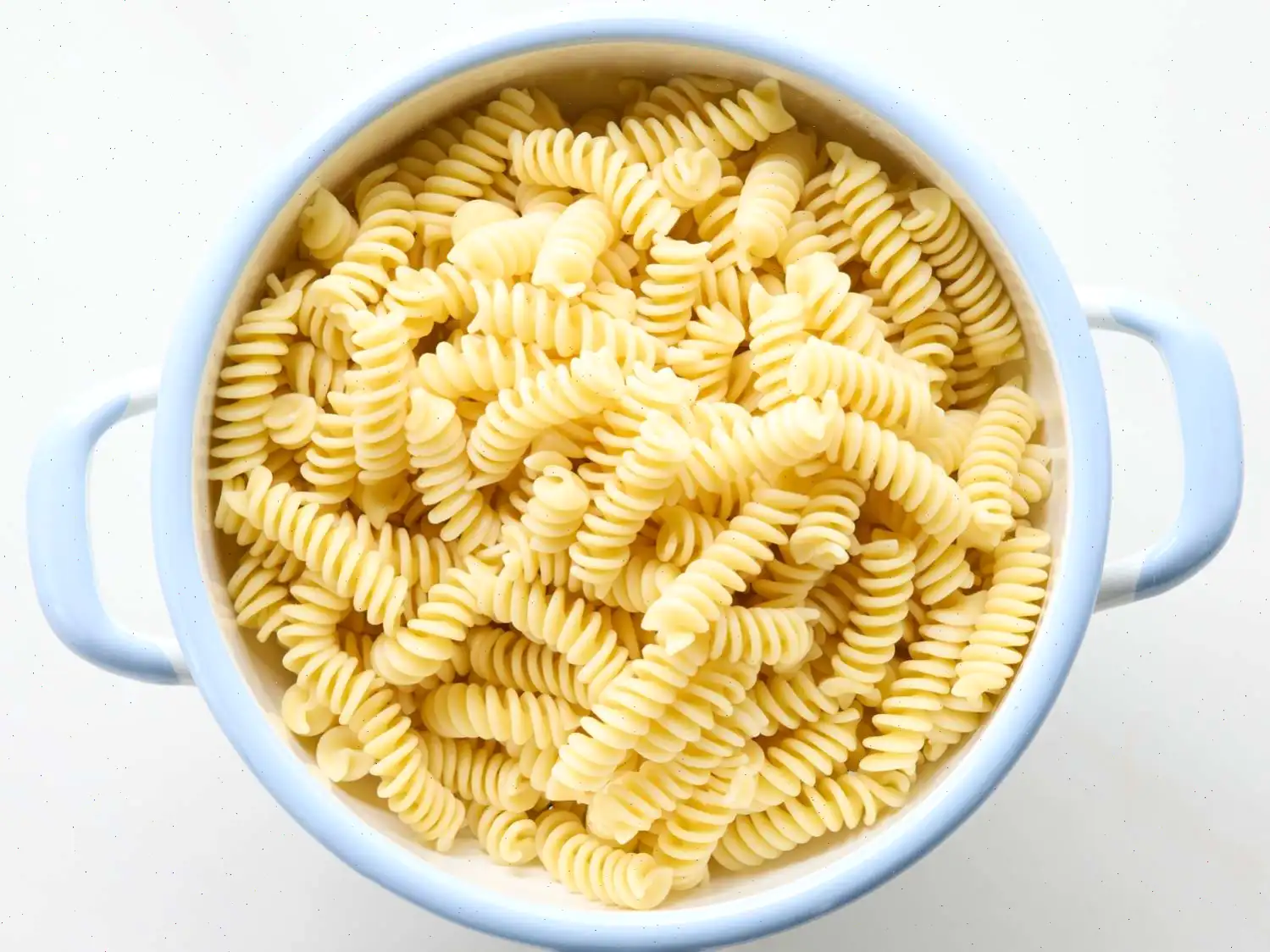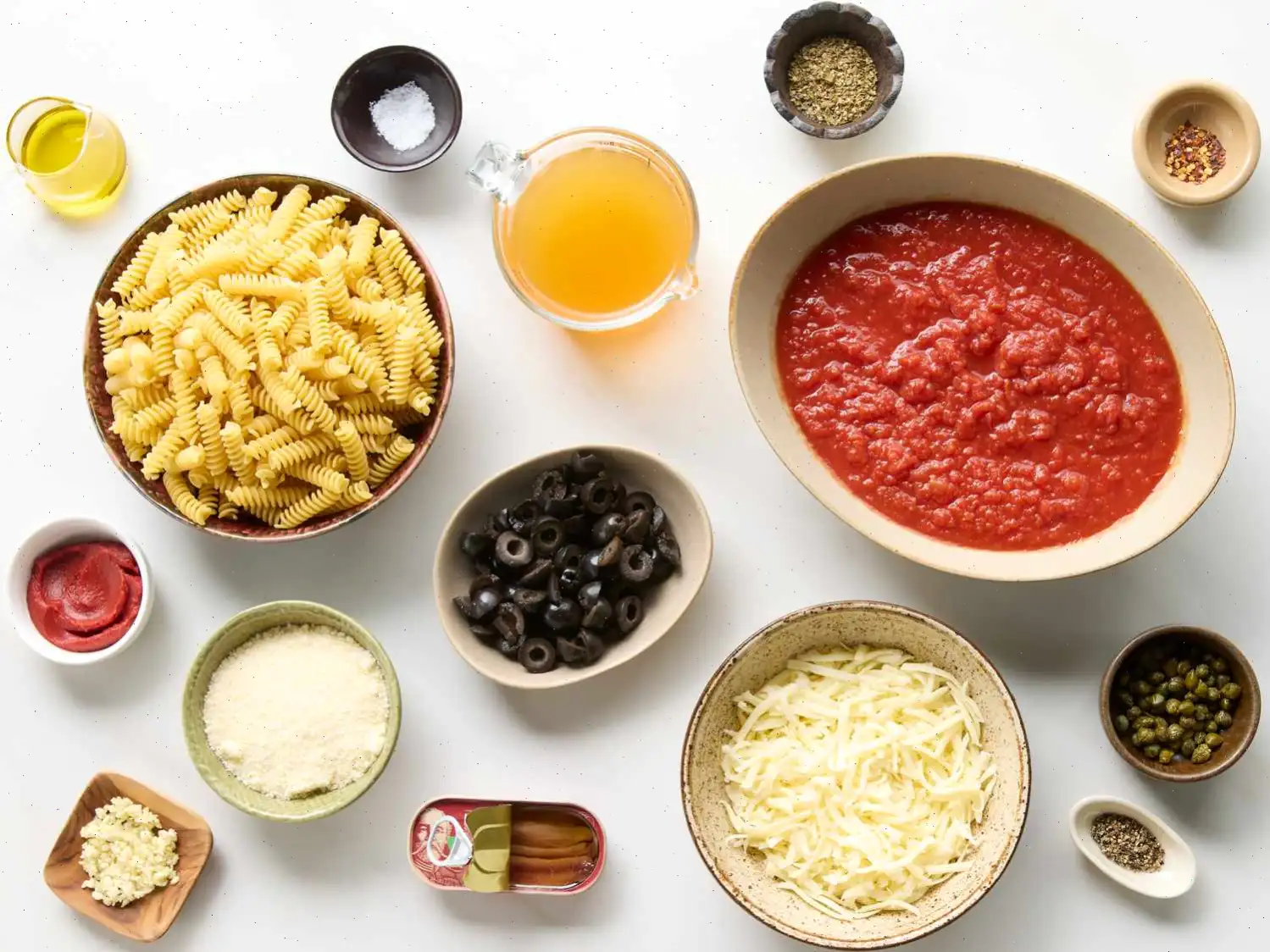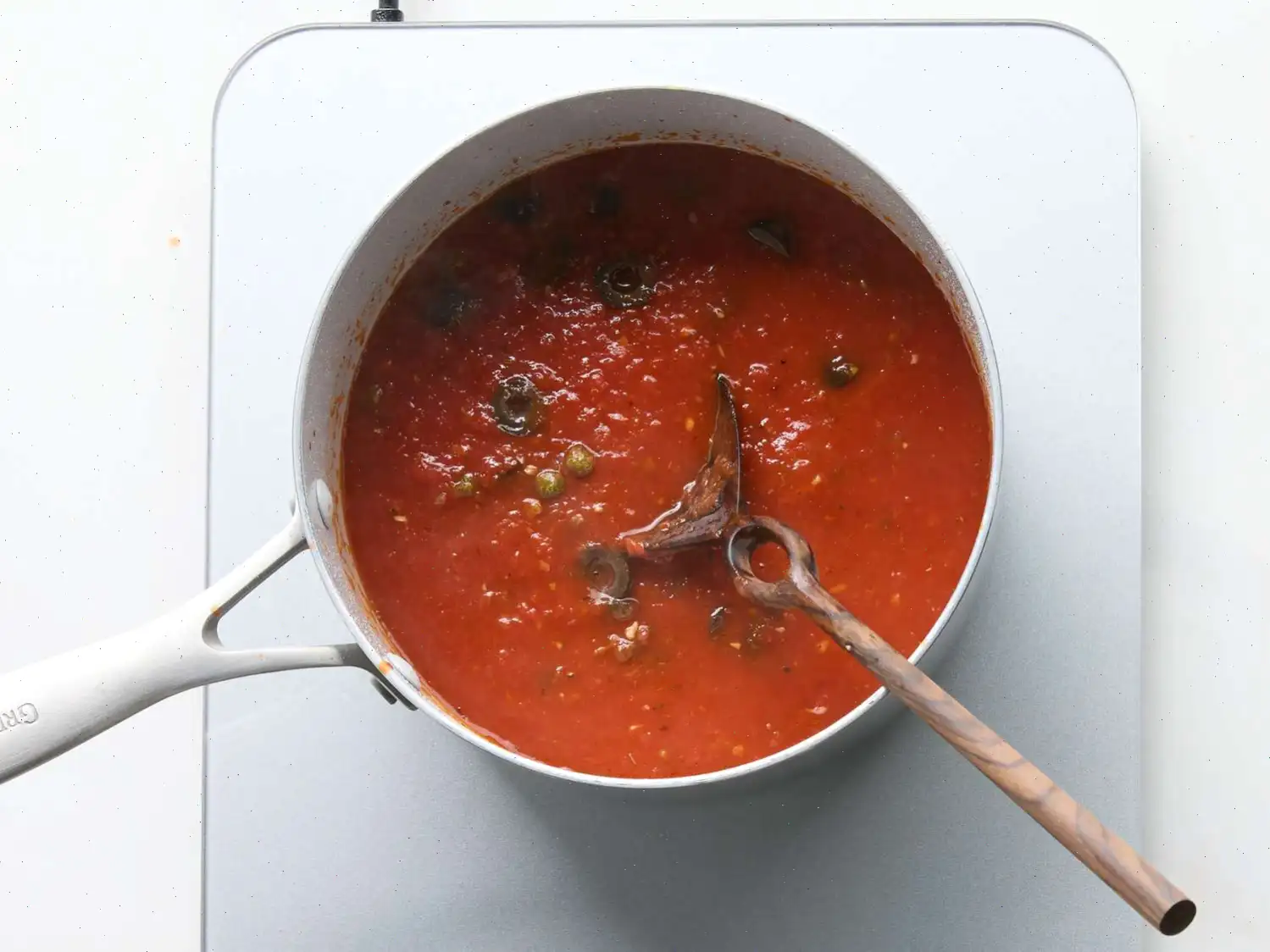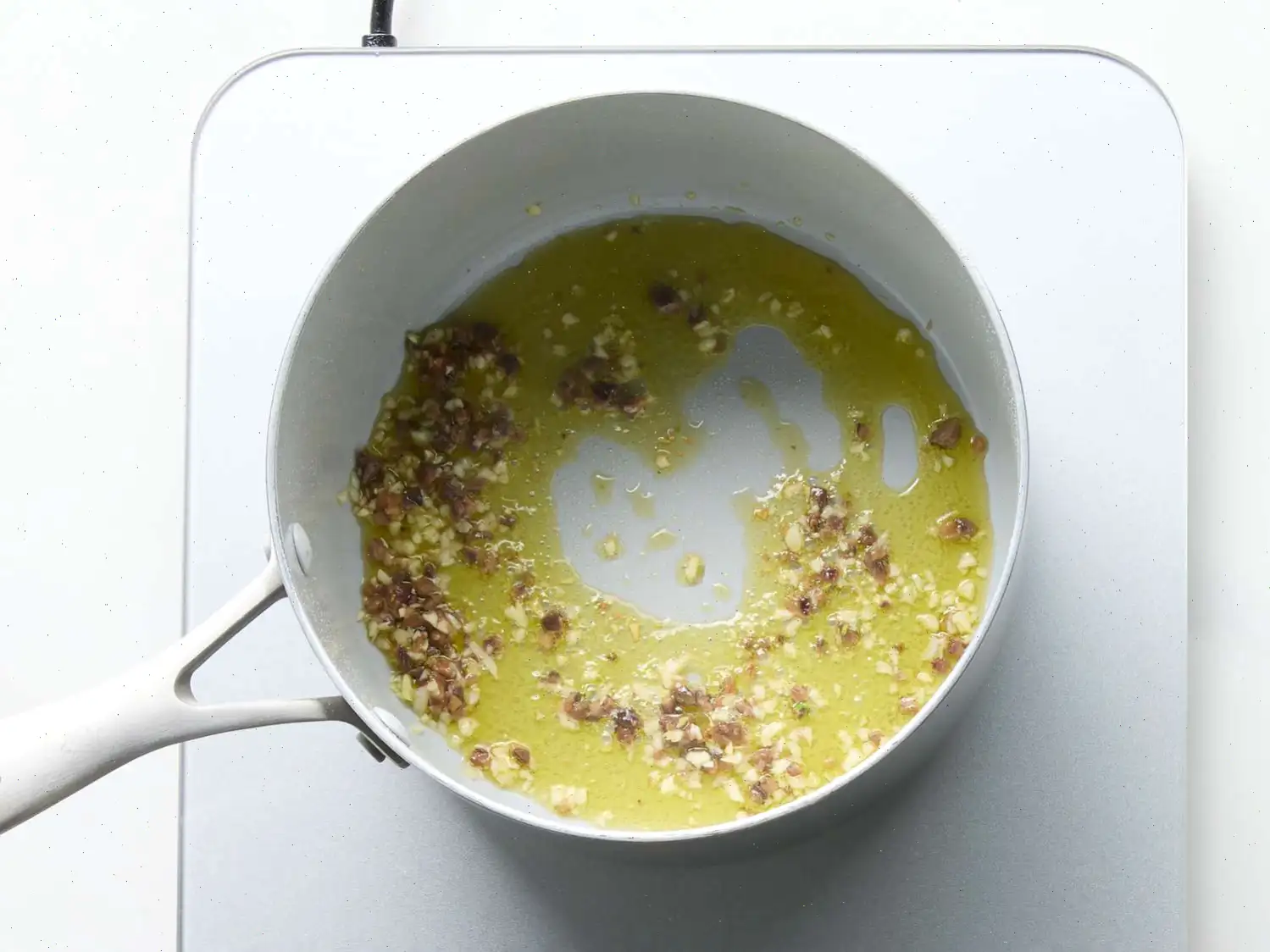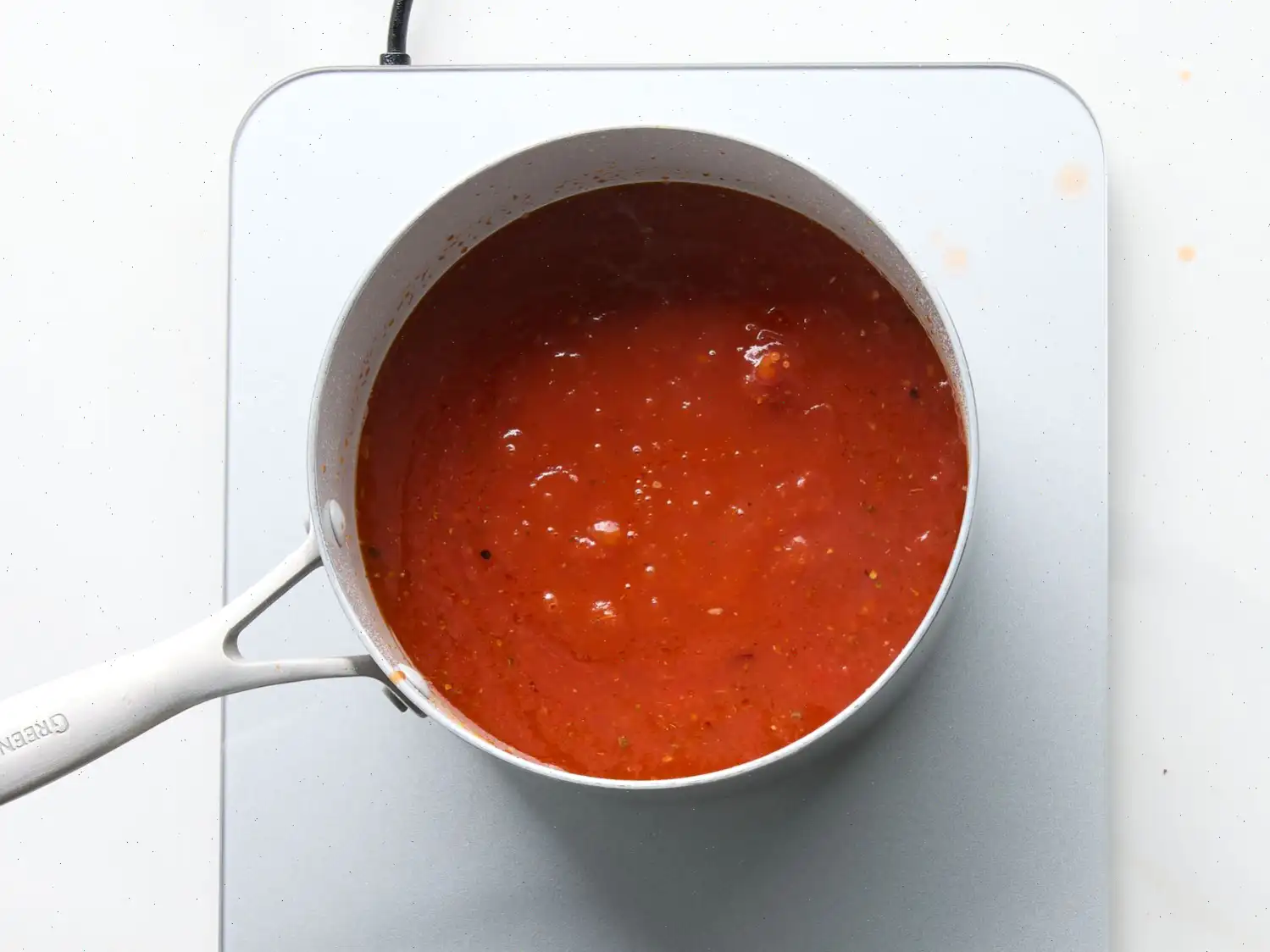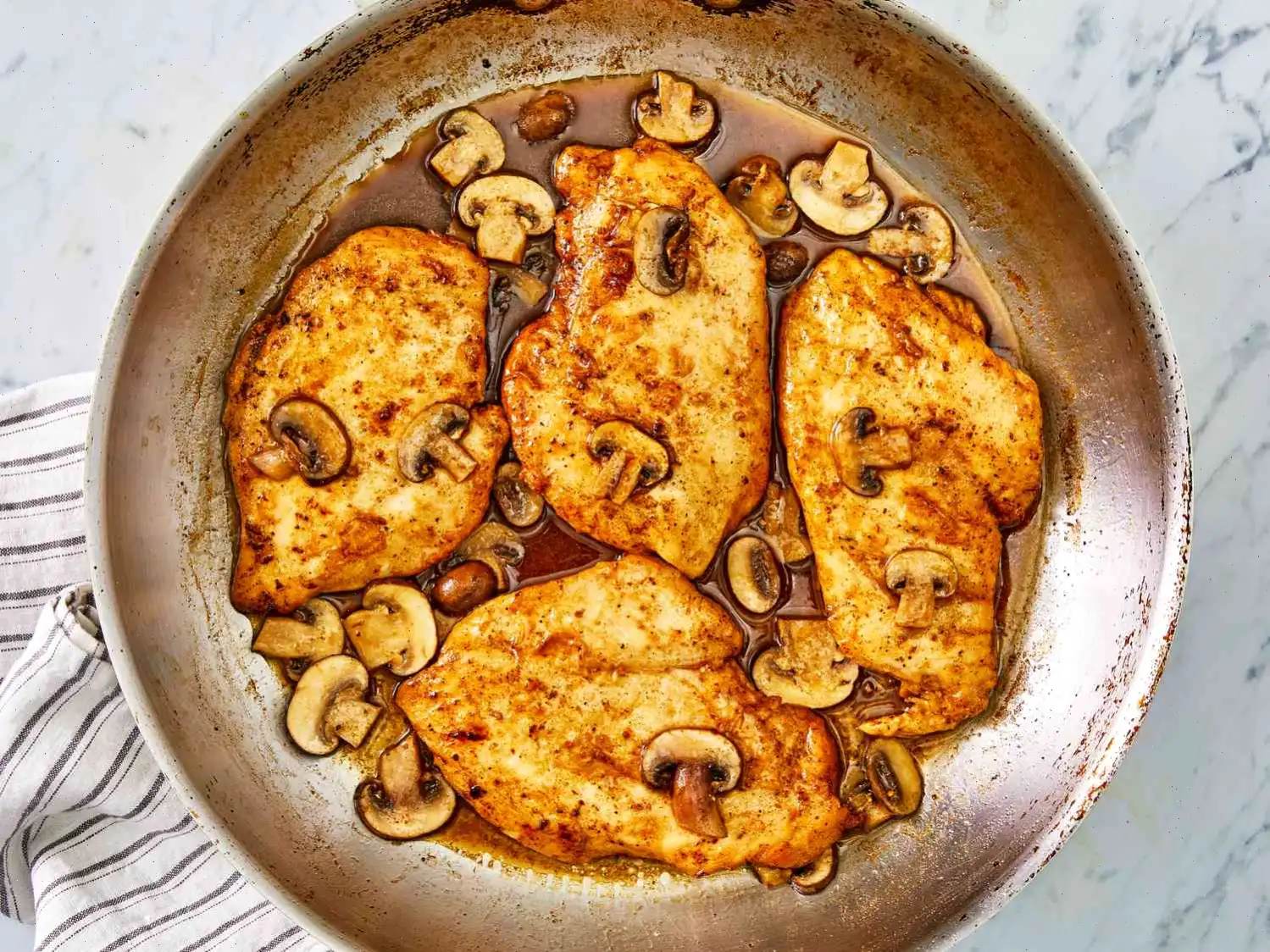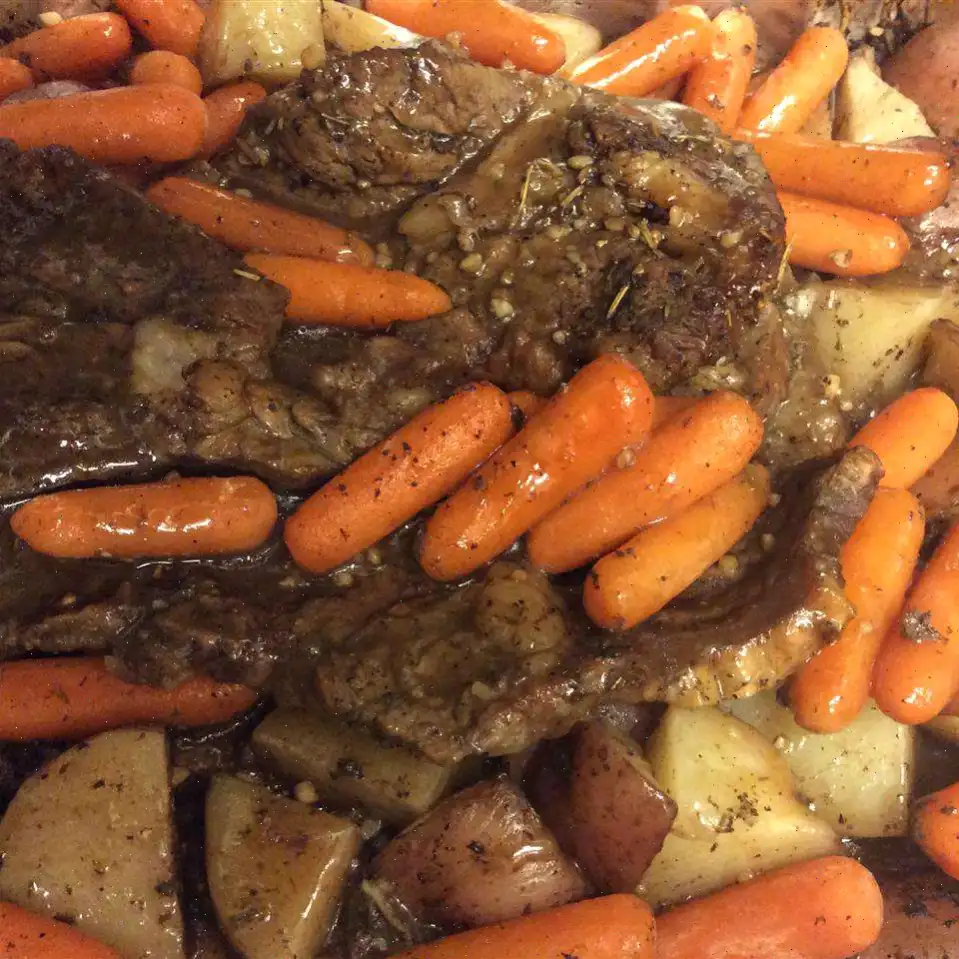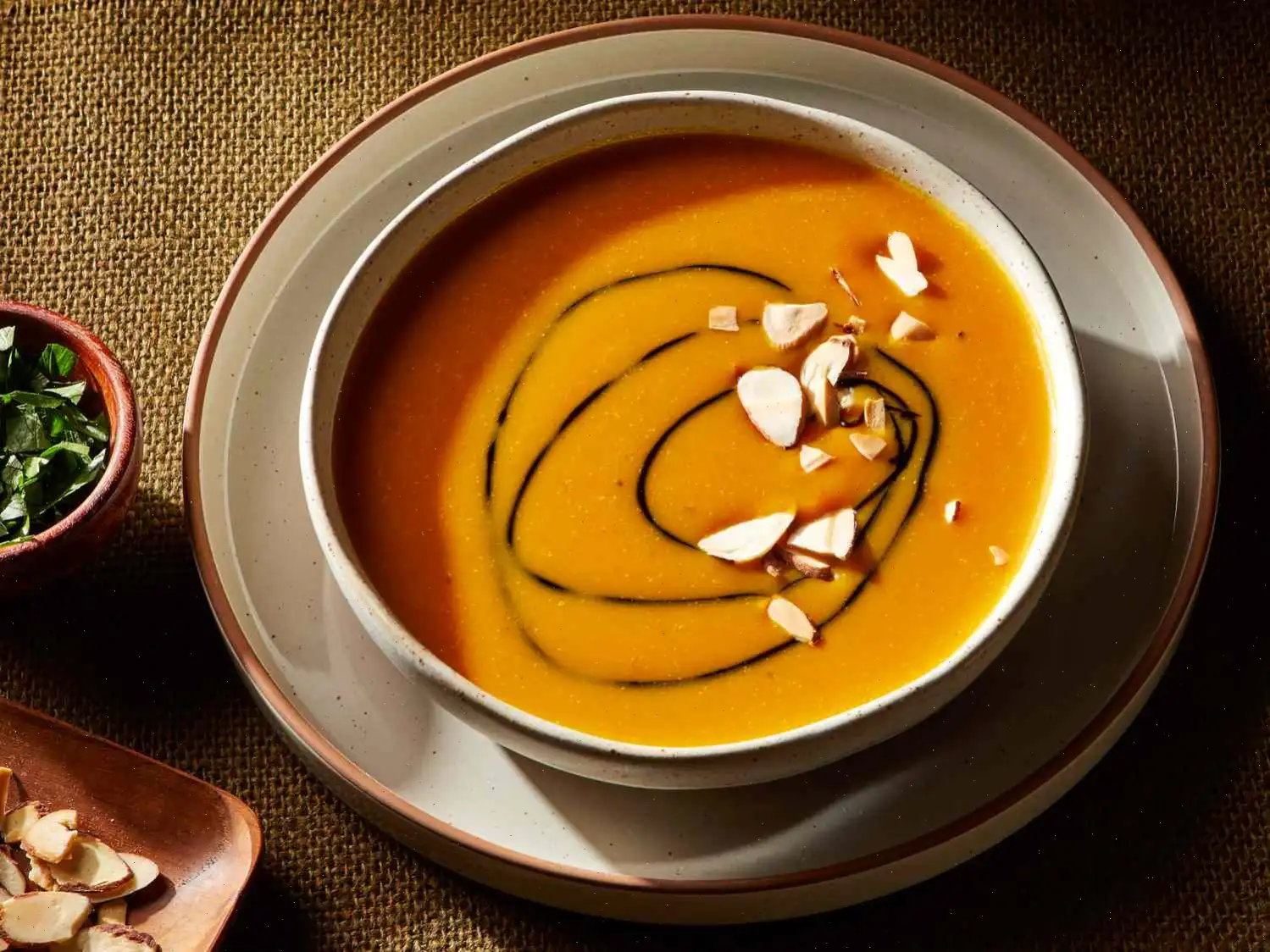
Puttanesca Pasta Bake Recipe
Ingredients
This recipe is designed for 8 servings. Ingredient amounts can be adjusted, but cooking times remain the same.
- 2 tablespoons extra virgin olive oil
- 3 cloves garlic, minced
- 3 anchovy fillets, finely chopped (optional)
- 2 tablespoons tomato paste
- 1 (28-ounce) can crushed tomatoes
- 1 cup vegetable broth or water
- 1 teaspoon dried oregano
- 1/2 teaspoon freshly ground black pepper
- 1/2 teaspoon salt
- 1/4 teaspoon crushed red pepper, or more to taste
- 1 pound spaghetti or fusilli
- 3/4 cup pitted black olives, chopped
- 2 tablespoons capers
- 1 cup shredded mozzarella cheese
- 1/2 cup grated Parmesan cheese
- Chopped fresh parsley, for garnish
Directions
- Preheat your oven to 350F (175C) and gather all ingredients.
- Heat the olive oil in a large saucepan over medium heat. Add garlic and anchovies, cooking until fragrant, about 1 minute.
- Stir in the tomato paste and cook for an additional minute to enhance its flavor.
- Add crushed tomatoes, vegetable broth, oregano, black pepper, salt, and crushed red pepper. Bring to a gentle boil, then reduce heat and simmer for about 10 minutes, stirring occasionally until the sauce thickens.
- While the sauce simmers, cook pasta according to package instructions until al dente. Drain and set aside.
- Mix chopped olives and capers into the tomato sauce. Gently combine the cooked pasta with the sauce, making sure every strand is coated.
- Transfer the pasta mixture into a 9x13-inch baking dish. Sprinkle evenly with mozzarella and Parmesan cheeses.
- Bake in the preheated oven for about 10 minutes, or until the cheese is fully melted and golden.
- Serve hot, garnished with freshly chopped parsley.
Nutrition Facts (per serving)
- Calories: 367
- Fat: 11g (14% DV)
- Saturated Fat: 4g (19% DV)
- Cholesterol: 17mg (6% DV)
- Sodium: 766mg (33% DV)
- Carbohydrates: 53g (19% DV)
- Dietary Fiber: 5g (16% DV)
- Sugars: 7g
- Protein: 15g (29% DV)
- Vitamin C: 11mg (13% DV)
- Calcium: 197mg (15% DV)
- Iron: 4mg (22% DV)
- Potassium: 501mg (11% DV)
*Percent Daily Values are based on a 2,000 calorie diet. Nutrient information is based on available data; consult a professional for medically restrictive diets.
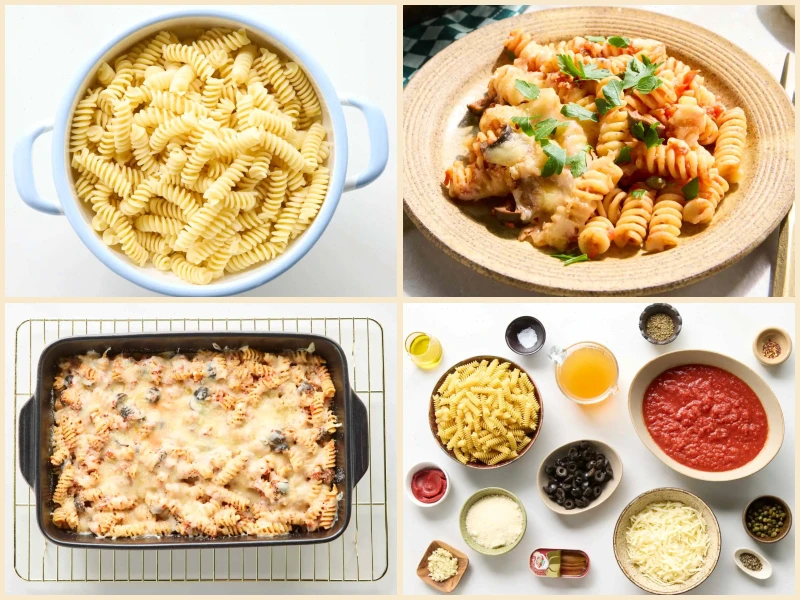
The History and Cultural Background of Puttanesca Pasta Bake
Puttanesca pasta, originating from the coastal region of Naples in Southern Italy, has an intriguing and somewhat colorful history. The dish is said to have emerged in the mid-20th century, during a period of culinary experimentation. The name "puttanesca" literally translates to "in the style of the prostitute," reflecting a popular legend that it was a quick, flavorful meal made from pantry staples by women working late hours. Anchovies, olives, capers, and tomatoes were common ingredients readily available in Neapolitan households, allowing the dish to be prepared rapidly without compromising on taste.
Regional Characteristics
In Naples and the surrounding Campania region, traditional puttanesca pasta is typically served as a simple stovetop dish with spaghetti. The baked variation, like the Puttanesca Pasta Bake, has gained popularity outside Italy, especially in North America, where casseroles and oven-baked pasta dishes are common. Regional adaptations sometimes include varying the type of pastafusilli or penneand adjusting the spice level with crushed red pepper or adding more robust cheeses for a heartier texture.
Differences from Similar Dishes
Unlike classic tomato-based pasta sauces, puttanesca is distinguished by its bold, briny flavors from olives, capers, and anchovies. While other Italian sauces like marinara or arrabbiata rely mostly on tomatoes and herbs, puttanesca achieves a complex umami depth. The baked version introduces a layer of melted mozzarella and Parmesan, creating a gratin-like texture that differentiates it further from its Neapolitan origins and adds a comforting, creamy element absent from the traditional stovetop preparation.
Where It Is Typically Served
Puttanesca Pasta Bake is commonly served in family-style dinners, casual Italian restaurants, and home gatherings. Its hearty and robust flavor makes it ideal for group meals, potlucks, and comfort food occasions. While traditional puttanesca is a quick weekday meal, the baked variant elevates it into a dish suitable for weekend dinners or festive occasions. In Italy, you would mostly find the original version, whereas the baked adaptation has become a popular choice in American and international Italian cuisine.
Interesting Facts
- The original puttanesca sauce was designed for speed, requiring less than 20 minutes to prepare, making it a perfect last-minute dish.
- Anchovies, a core ingredient, dissolve into the sauce during cooking, leaving a subtle umami flavor rather than a fishy taste.
- Capers and olives contribute not only saltiness but also a unique Mediterranean tang, giving the sauce a complex balance of flavors.
- Some variations include a touch of lemon zest or parsley garnish to brighten the dish and add freshness.
- Puttanesca has inspired numerous modern adaptations, including baked casseroles, gluten-free pasta versions, and even low-carb renditions.
This fusion of history, regional influence, and bold Mediterranean flavors has made Puttanesca Pasta Bake a favorite worldwide, celebrated for its quick preparation, satisfying taste, and versatile appeal.


